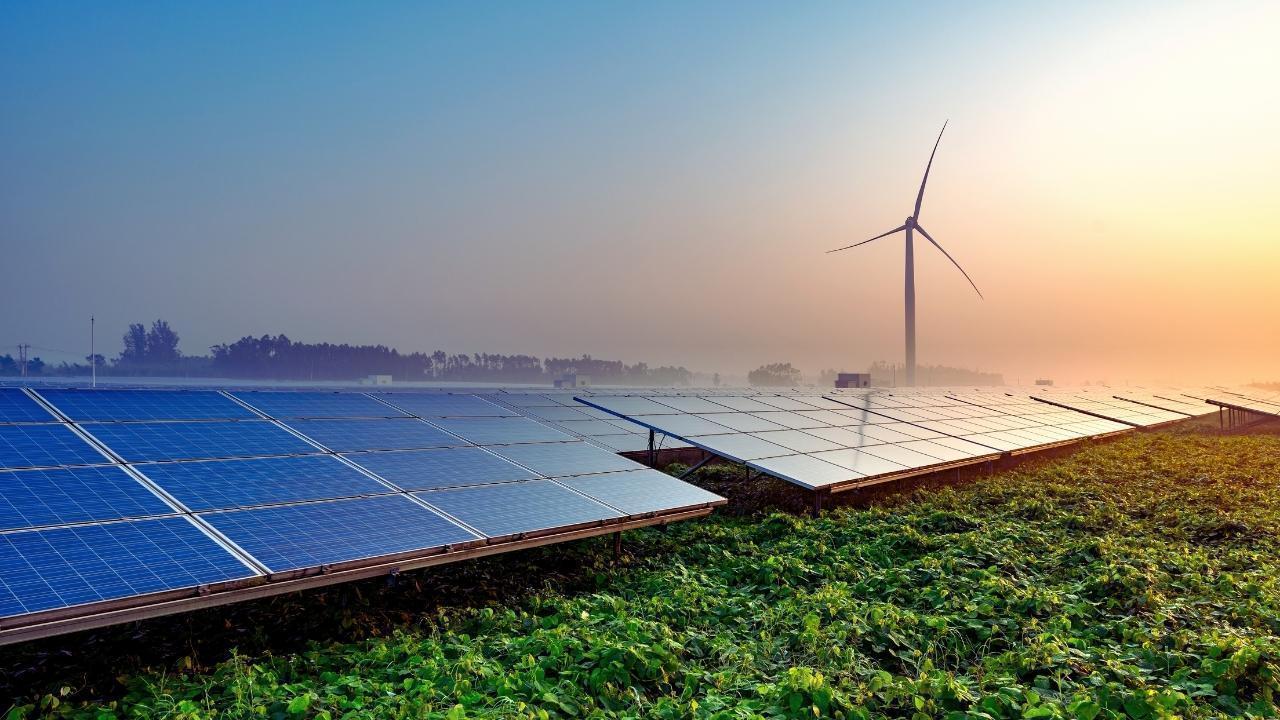
Join 10k+ people to get notified about new posts, news and tips.
Do not worry we don't spam!

Post by : Anis Farhan
In 2025, agriculture is facing a crossroads. On one hand, the global demand for food is at an all-time high, with populations growing and dietary patterns shifting toward resource-intensive foods. On the other, climate change, soil degradation, and water scarcity are threatening the very systems that support food production.
In this critical moment, a concept once considered little more than a marketing term—regenerative farming—has emerged as a solution that is both practical and revolutionary. Unlike conventional farming, which often extracts more from the land than it gives back, regenerative farming prioritizes restoring ecosystems, improving soil, and creating resilient food systems for the long term.
The truth is simple: regenerative farming is not just another buzzword. It represents a mindset shift, a movement, and a path toward feeding the world without destroying it.
At its core, regenerative farming is a holistic approach to agriculture designed to restore and enhance the natural environment. It goes beyond sustainability, which focuses on maintaining resources at their current state. Regenerative practices actively improve them.
This means rebuilding soil fertility, increasing biodiversity, and enhancing water cycles, all while producing food. It includes techniques such as cover cropping, no-till farming, rotational grazing, agroforestry, composting, and integrating livestock with crops.
The philosophy is rooted in reciprocity: farming in ways that give back to the land instead of depleting it. By working with natural systems instead of against them, regenerative farmers aim to build resilience into both the soil and the communities that depend on it.
There are three urgent reasons regenerative farming has moved from theory to necessity in 2025:
Soil Health Crisis – Studies show that nearly one-third of the world’s soils are degraded. Without intervention, we could face declining crop yields within decades.
Climate Change – Agriculture accounts for a significant share of greenhouse gas emissions, but regenerative practices like carbon sequestration can help offset this.
Food Security – With global populations projected to reach nearly 10 billion by 2050, traditional farming methods cannot meet demand without destroying ecosystems.
Regenerative agriculture addresses all three issues by healing soils, reducing emissions, and producing food more sustainably.
Healthy soil is the foundation of regenerative farming. It’s not just dirt—it’s a living system filled with microbes, fungi, and organic matter that support plant growth. Conventional farming practices such as heavy plowing, monocropping, and chemical overuse strip soil of its vitality, leaving it barren over time.
Regenerative practices reverse this damage. For instance, planting cover crops reduces erosion, while crop rotation helps maintain nutrient balance. Adding organic compost increases carbon storage, creating richer, more fertile land. Over time, farmers notice higher yields, better water retention, and fewer pests—all without relying heavily on synthetic inputs.
Soil health is more than an agricultural issue; it is directly linked to global climate solutions. Healthy soils store more carbon, acting as a natural sink for greenhouse gases. This makes regenerative farming a powerful tool in the fight against climate change.
All over the world, farmers are proving that regenerative farming works in practice.
In the United States, ranchers using rotational grazing have seen dramatic improvements in grassland health while reducing methane emissions from livestock.
In India, smallholder farmers adopting composting and intercropping have boosted yields while cutting input costs.
In Africa, agroforestry systems—where trees are planted alongside crops—are restoring degraded lands and providing additional sources of income.
These examples highlight a crucial point: regenerative agriculture is not a one-size-fits-all model. It adapts to local climates, traditions, and ecosystems. That flexibility is one reason it is gaining traction worldwide.
Regenerative farming is not about rejecting modern tools—it’s about using them wisely. In 2025, digital technologies are enhancing regenerative practices.
Drones and sensors monitor soil moisture, crop health, and biodiversity, helping farmers optimize interventions.
AI-powered platforms recommend crop rotations and planting schedules tailored to local soil conditions.
Blockchain systems track food from farm to table, verifying regenerative practices for consumers who demand transparency.
Technology is helping scale regenerative agriculture, making it more efficient and accessible even for large-scale producers.
Regenerative farming is no longer just a farmer’s concern—it’s a consumer movement. Shoppers are more conscious of where their food comes from, how it is grown, and its environmental impact. Labels like “regeneratively grown” are appearing on store shelves, and major brands are investing in regenerative supply chains.
For example, food companies are partnering with farmers to secure regenerative ingredients, ensuring long-term sustainability and appealing to eco-conscious buyers. Restaurants and retailers are also using regenerative sourcing as a competitive advantage, catering to consumers who value both taste and ethics.
This shift is not only changing farming practices but also creating new markets. Regenerative products often command higher prices, making farming more profitable for those who adopt these methods.
Despite its promise, regenerative farming is not without challenges:
Transition Costs: Switching from conventional to regenerative methods often requires upfront investment and time before benefits appear.
Knowledge Gaps: Not all farmers have access to training or resources to implement regenerative practices.
Policy and Incentives: Many agricultural policies still favor industrial farming, making it harder for regenerative practices to compete.
Scalability: While regenerative methods thrive on smaller farms, scaling them to industrial levels poses complex challenges.
Overcoming these hurdles will require coordinated efforts from governments, businesses, and consumers. Subsidies, training programs, and better access to markets are essential to make regenerative agriculture mainstream.
Some critics argue that “regenerative” is becoming a trendy label used for marketing rather than genuine transformation. And while greenwashing is a real risk, the evidence shows that authentic regenerative farming produces measurable results—improved soil, reduced emissions, better yields, and stronger rural economies.
The difference lies in accountability. Genuine regenerative systems are grounded in science, transparency, and commitment to long-term change. That’s why organizations, scientists, and farmers are working together to create standards that protect the integrity of the term.
Regenerative farming is not just about food—it’s about the future. It challenges us to rethink our relationship with the land and recognize that agriculture can be part of the climate solution rather than the problem.
In 2025, regenerative farming has moved far beyond a buzzword. It is shaping how farmers grow, how consumers choose, and how businesses operate. While challenges remain, its potential to restore ecosystems, fight climate change, and secure food for future generations makes it one of the most powerful movements of our time.
If agriculture is the foundation of human civilization, regenerative farming is the blueprint for ensuring that foundation remains strong for generations to come.
This article is for informational purposes only and does not constitute agricultural, environmental, or financial advice. Readers should consult experts or local authorities before adopting new farming practices.










Paramount+ to Stream PBR’s 'Unleash the Beast' in New Five-Year Deal
Paramount+ will stream PBR’s 'Unleash the Beast' across the U.S. starting this December under a five

Zohran Mamdani Clinches NYC Mayoral Seat as Victory Speech Blends Politics and Bollywood
Zohran Mamdani won New York City's mayoral race, becoming the city's first Muslim and South Asian ma

India Wins First Women’s World Cup 2025 Title
India lifts its maiden Women’s World Cup 2025 title! Harmanpreet Kaur’s team stuns South Africa in a

Manuel Frederick, 1972 Olympic Bronze Goalkeeper, Dies at 78
Manuel Frederick, a member of India’s 1972 Olympic bronze hockey team, has died in Bengaluru at 78 a

Muhammad Hamza Raja Wins IFBB Pro Card Puts Pakistan & UAE on Global Stage
Pakistani bodybuilder Muhammad Hamza Raja earns IFBB Pro Card in Czech Republic, showcasing Dubai’s

Shreyas Iyer’s Recovery Underway After Spleen Laceration in Sydney ODI
Shreyas Iyer is recovering after a spleen laceration sustained while taking a catch in the Sydney OD